Once your horse is trained to do the rollback (covered in the June issue’s installment of Winning Insights), you need to keep that maneuver solid and polished. But it’s not easy. Schooling rollbacks over and over leads to anticipation, which deteriorates the quality of your horse’s maneuver. It can also cause your horse to drop his shoulder into the turn, making him U-turn because he’s unable to elevate his front end and get all the way around to go the other direction.
For those reasons, I suggest schooling rollbacks like you show them—precise, but not too often. Here are my five step-by-step tips for success.
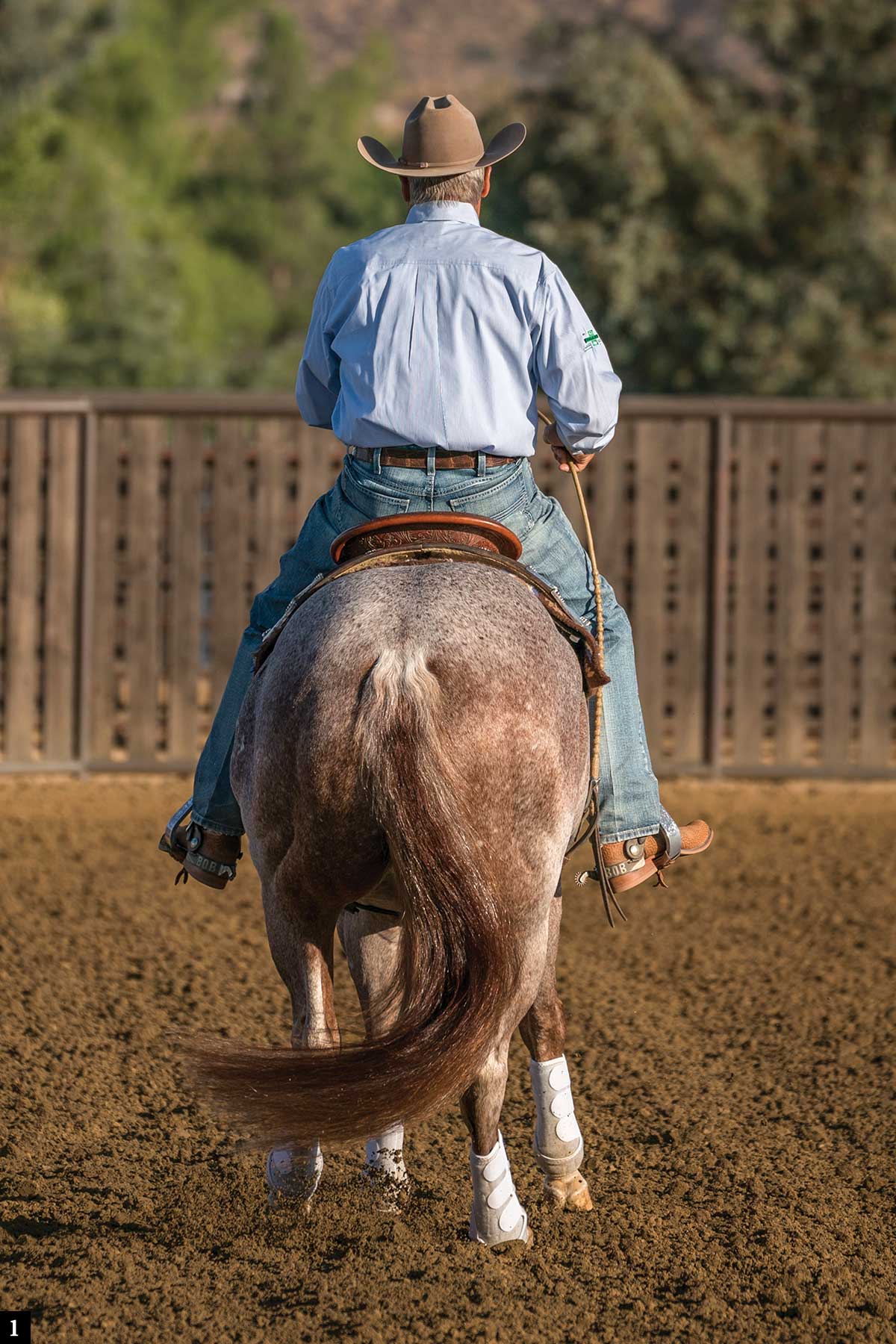
One
I stop flat-footed—that means a complete stop, with all four feet on the ground—before I even think about the rollback. I sometimes back my horse a step to ensure that he’s on his hindquarters. My horse must be balanced on his hind end so he’s prepared to begin the maneuver. If he’s heavy on his forehand, he can’t lift it and bring it around.
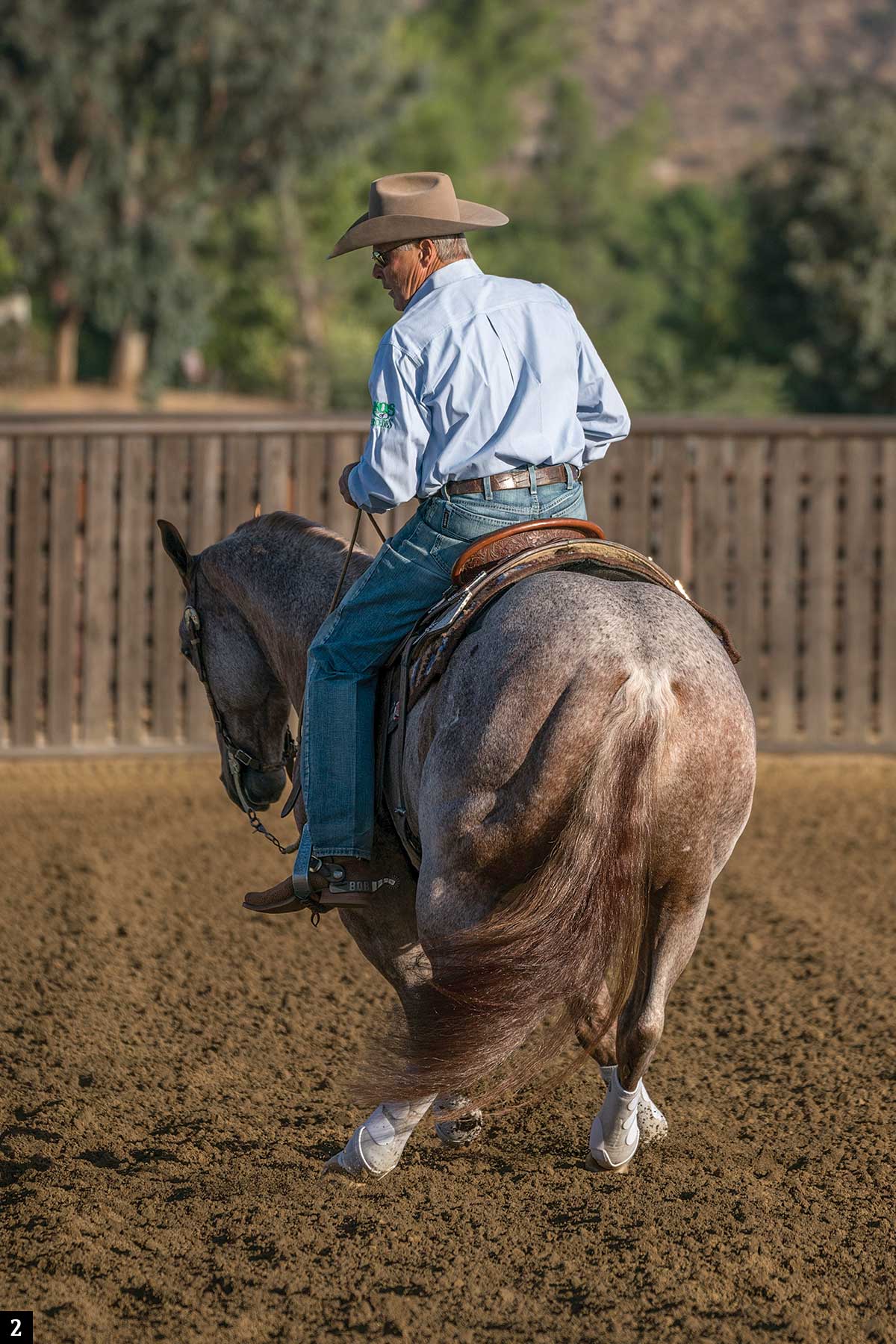
Two
My body position plays a major part in my rollback. Here I’m beginning to look where I want to go—over my shoulder, back in the other direction. Staying balanced on his hindquarters, my horse prepares for the next step even though my hand hasn’t moved. At this moment, I wait for my horse to bring his shoulders through to the left. If I had to pull his shoulders through, I’d create a reverse arc in his body with his head looking right as I drag him left.
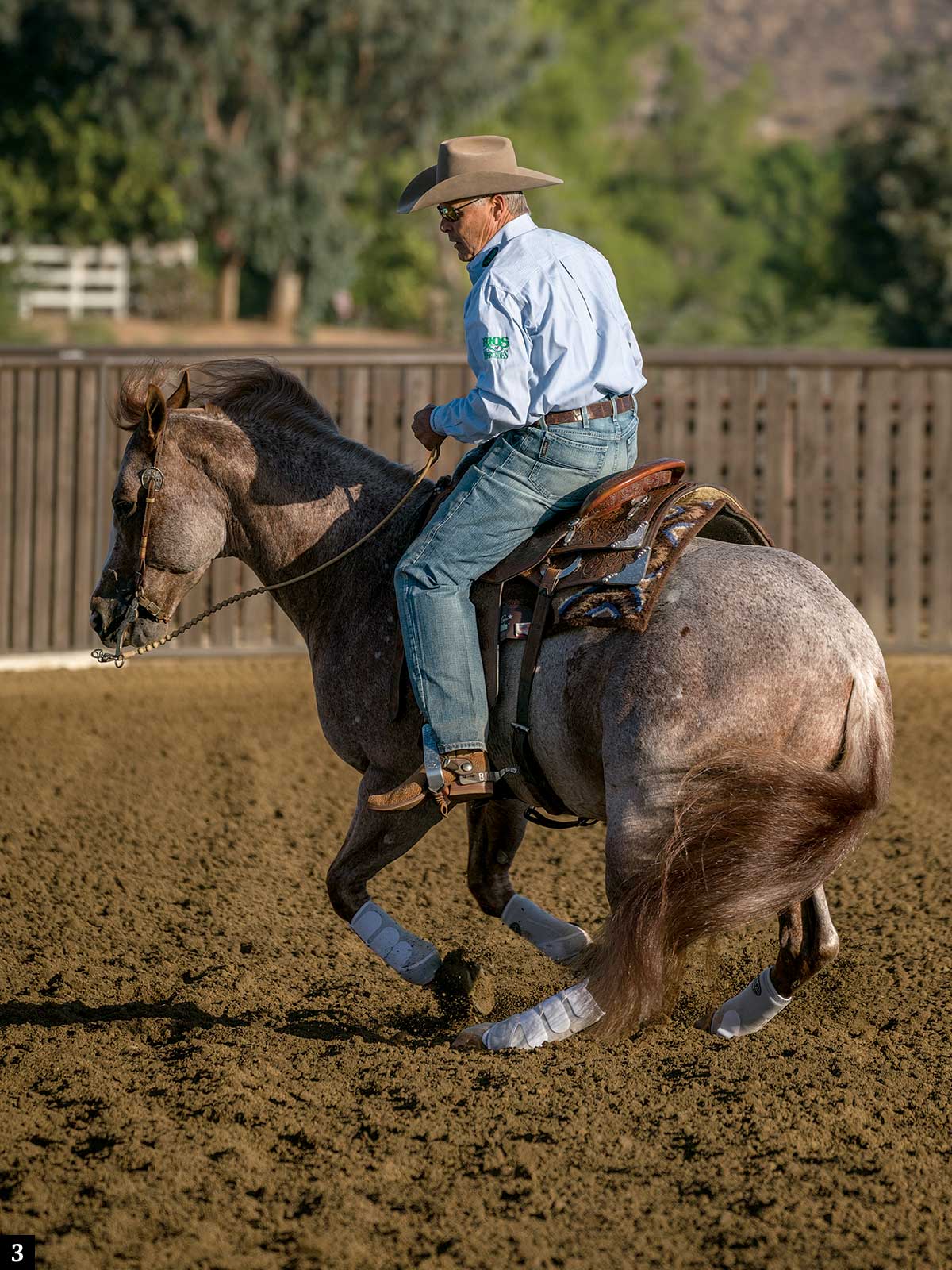
Three
This photo says it all. My horse is balanced on his rear end, his front end is elevated, and his front legs are tucked under to sweep through the rollback. I’m still looking where I’m going, as I am in each of these photos. If I quit riding here—drop my hand and look down—the movement dies in this frame. I must keep riding all the way through the rollback to the end point where I lope off.
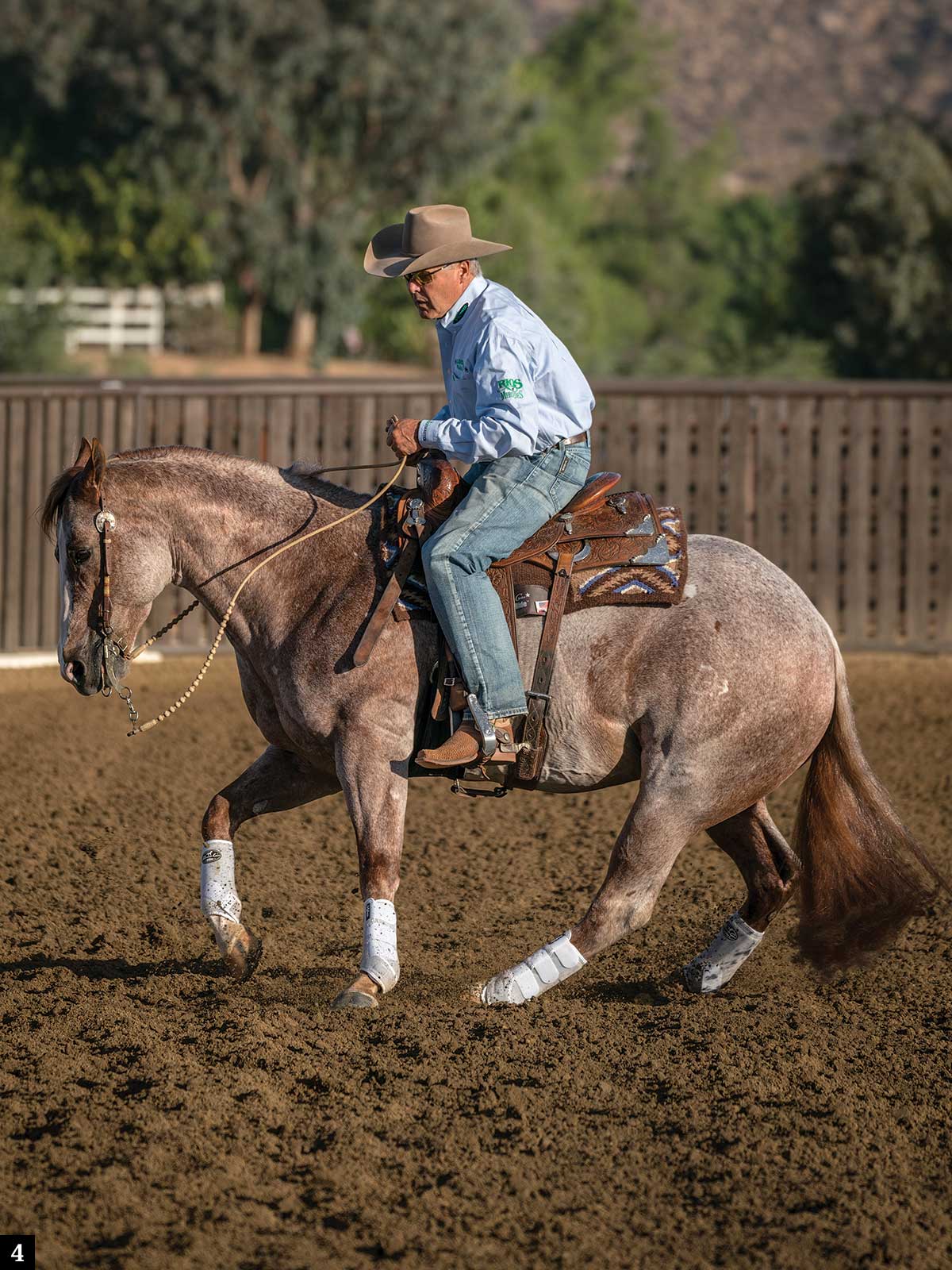
Four
My rollback started at 12:00, and I want it to end precisely at 6:00. That’s a true rollback over my horse’s hocks. If I’d quit riding at 9:00, where I am now, I’d basically make a U-turn, which isn’t what the judges are looking for. But I can’t get impatient and push my horse to 6:00. A rollback is all about position, balance, and patience. That makes it smooth and quick—not rushed.
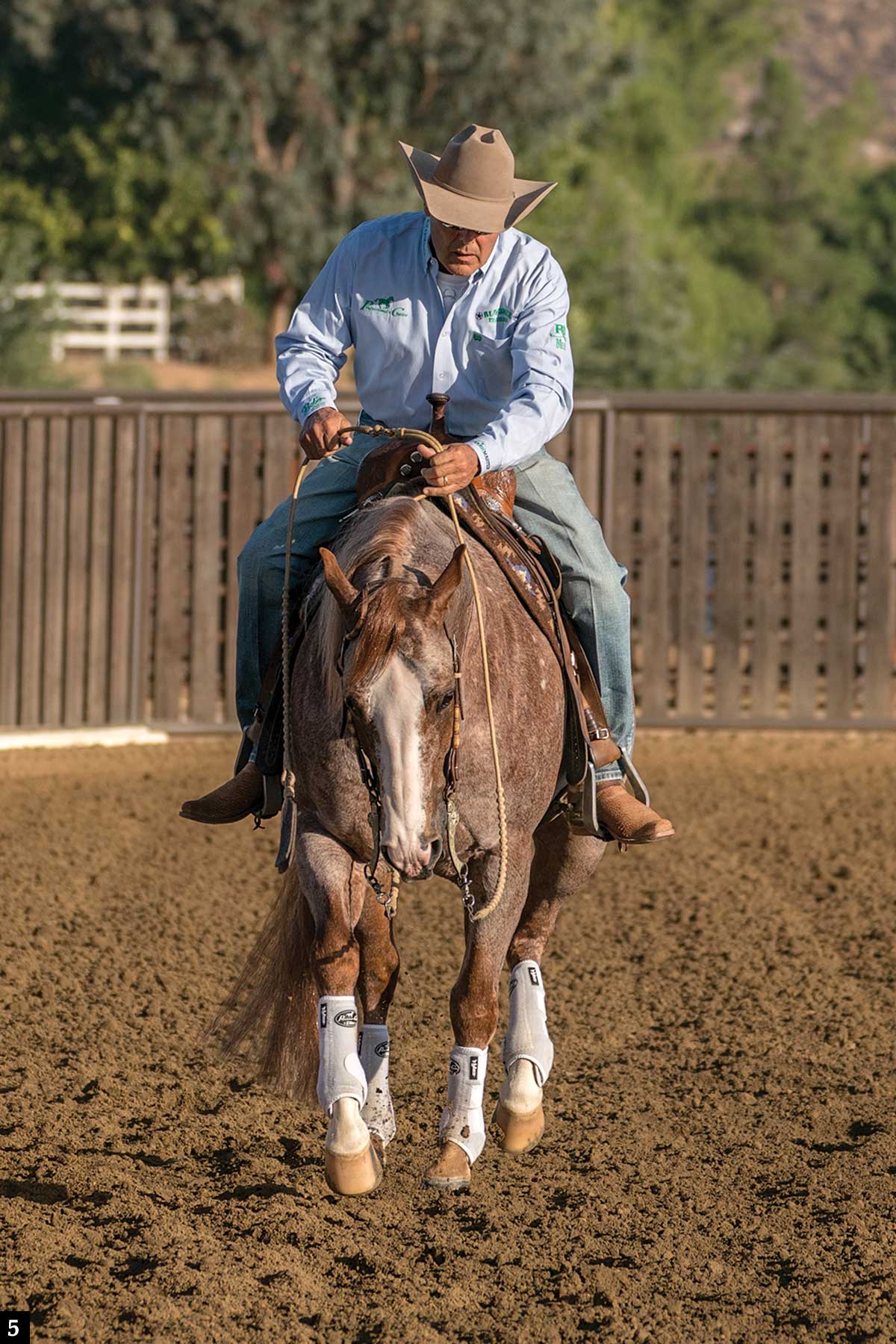
Five
You can see that I’m loping off in the tracks I made in my rundown to the rollback. That means I’m ending the maneuver in exactly the correct spot. This allows my horse to depart the rollback on the correct lead, which makes the entire maneuver smoother. If I’d gone past 6:00 to 5:00, I’d have to push my horse to the right to get on a straight track. That means he’s positioned to pick up the right lead and I’ll have to change leads before I get to the corner. It’s not a penalty to exit a rollback on the wrong lead, but it does take away from the overall look. Departing on the correct lead sets you up to move on to your next stop and rollback with nothing to fix.
Bob Avila, Temecula, California, is an AQHA world champion, three-time NRCHA Snaffle Bit Futurity winner, NRHA Futurity champ, and two-time World’s Greatest Horseman. He’s been named the AQHA Professional Horseman of the Year. Learn more at bobavila.net.






